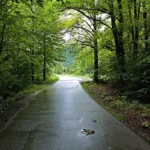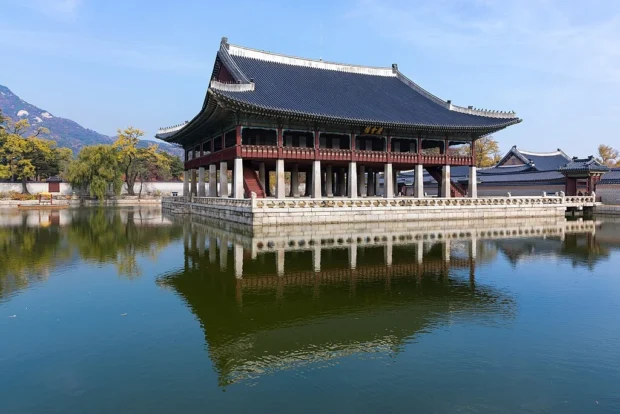Seoul is a city full of life, history, and colors. It mixes old palaces with tall buildings and busy markets. Walking its streets, you find a place where the past meets the future. The food is tasty and full of flavors you might not know yet. The people are warm and welcoming, ready to share their stories. This city invites everyone to enjoy its many charms and secrets.
Table of Contents

Getting around Seoul is easy with its clean and fast subway system. From the airport, you can take the airport railroad express to the city center quickly and without stress. It opens the door to the many adventures waiting in this city. You will find famous landmarks, hidden quiet spots, and food places that make your visit special.

Famous Landmarks and Quiet Corners
Start your visit at Gyeongbokgung Palace, the largest palace in Seoul. Its beautiful roofs and big gates tell stories from Korean kings long ago. If you come in the morning, you might see the changing of the royal guard – a colorful and lively show. Near the palace, the National Folk Museum gives a look into Korea’s past traditions and daily life.

Not far away lies Bukchon Hanok Village. Here, old Korean houses called “hanoks” line narrow alleys. It feels like stepping back in time. Many people live here still, so walk quietly and respect their space. This village is perfect for taking pictures that look like postcards from history.

A quieter place is Ihwa Mural Village. Climbing its small hills, you find walls painted with bright and fun pictures. It is less crowded and lets you enjoy art in a peaceful way. Another less-known spot is Seonyudo Park, an island park on the Han River with gardens and water views, perfect for relaxing after busy city walks.

Taste Seoul’s Best Food Neighborhoods
South Korean food is a big part of Seoul’s charm. In Myeongdong, a busy shopping area, street food stalls sell tasty snacks like spicy rice cakes (tteokbokki) and fried chicken. Don’t miss trying hotteok, a sweet pancake filled with brown sugar and nuts, perfect for a quick treat.

For a full meal, visit the district of Insadong, famous for traditional tea houses and restaurants. Try bibimbap, a warm bowl of rice mixed with vegetables and meat, often topped with a fried egg. It’s colorful and very healthy. Nearby, you can find shops selling handmade crafts, perfect for souvenirs.

Hongdae is the place for those who love youth culture and nightlife. It’s full of cafes and restaurants with creative menus. Here, you can taste Korean BBQ, where you cook meat at your table. It is fun and a great way to eat with friends. Try to say “jal meokkesseumnida” (jal muh-kke-sseum-ni-da) before eating, meaning “I will eat well.” Koreans say this to show thanks for the food.

How to Move Around Seoul Easily
Seoul’s subway is one of the best ways to go from place to place. It is safe, clean, and signs are in English and Korean, making it easy for tourists. You can buy a reloadable transportation card at stations, which works on buses and subways. It saves time and money.

When you arrive at Incheon International Airport, take the AREX train to Seoul Station in about 50 minutes. This route is direct and comfortable. If you use buses, many lines connect the airport with different parts of the city, but subways are usually faster for new visitors.

Walking is also a great way to discover neighborhoods like Insadong or Bukchon. Streets are often full of small shops and cafes where you can stop anytime for a rest and a local drink.

Simple Customs and Friendly Habits
When visiting, it’s good to remember a few things about Korean manners. For example, when you give or receive something, use both hands as a sign of respect. If someone offers you food or a gift, it shows politeness. Saying “annyeonghaseyo” (an-nyoung-ha-se-yo) means “hello” and is always appreciated. It’s a kind way to start conversations with locals.

In restaurants, it is polite to wait for the oldest person to start eating first. Also, avoid speaking loudly or making phone calls on public transport. Koreans value quiet and calm environments in these places.

When you meet someone older or someone important, a small bow is a common greeting. It is not necessary to bow deeply as in old times, but a slight nod is respectful and friendly.

Stories and Fun Facts from Seoul Streets
Seoul has many stories hidden in its corners. For example, the name “Seoul” means “capital city” and used to be called “Hanyang.” The city has changed much but keeps its heart strong. At the palace, you might hear about King Sejong, who created the Korean alphabet, Hangul, so everyone could learn to read easily. Today, Hangul is celebrated every October with festivals and events.

One interesting fact is that Seoul is built near the Han River, which flows through the city. Locals enjoy walking or biking along the riverbanks. At night, the Banpo Bridge puts on a beautiful rainbow fountain show, combining water, light, and music. It’s one of those moments that make you smile quietly in the cool night air.
In markets like Namdaemun, you find all kinds of goods, from clothes to traditional medicines. It is a lively place full of voices and smells. Try bargaining politely, and say “gamsahamnida” (gam-sa-ham-ni-da) to thank shopkeepers. It means “thank you” and shows your appreciation.
Where to Stay for a Comfortable Visit
Seoul offers many places to stay, from quiet guesthouses to lively hostels. Areas like Myeongdong and Dongdaemun are perfect if you want to be in the center of shopping and food. If you prefer peace but still want easy access to the city, try neighborhoods near Hongdae, known for their youthful energy and many cafes.
Staying in a hanok guesthouse in Bukchon gives you a chance to sleep in traditional Korean style, with wooden floors and paper windows. It’s a small adventure by itself and makes your visit feel even more special.
Many places are easy to reach with subway lines, so you don’t spend too much time moving around. This way, you get more moments to enjoy the city’s colors, tastes, and stories.
Seoul is a city that dances between old and new, full of surprises and warmth. Whether you stroll in quiet alleys, enjoy sizzling food, or watch the busy life from a café, the city invites you to feel alive and curious. With friendly locals, simple customs, and places full of stories, Seoul offers memories that stay long after you leave.

A digital nomad exploring cities across the globe, with a passion for local street food and hidden cafes.
- Gyeonghoeru (Royal Banquet Hall) at Gyeongbokgung Palace, Seoul by Frank Schulenburg on Wikimedia Commons – cc by-sa 4.0
- Gyeongbokgung Mar 2025 138 by Epicgenius on Wikimedia Commons – cc by-sa 4.0
- N Seoul Tower (22574508070) by Laika ac from UK on Wikimedia Commons – cc by-sa 2.0
- Bukchon-ro 11-gil street with hanok houses in Bukchon Hanok Village Seoul by Basile Morin on Wikimedia Commons – cc by-sa 4.0
- Changdeokgung Palace, Seoul, constructd in 1405 (21) (39305184950) by Richard Mortel from Riyadh, Saudi Arabia on Wikimedia Commons – cc by 2.0
- Myeongdong night market seoul 1 by Sgroey on Wikimedia Commons – cc by-sa 4.0
- Insa-dong 인사동 October 1 2020 20 by S h y numis on Wikimedia Commons – cc by-sa 4.0
- 20240601 144028 Dongdaemun Design Plaza, Seoul 08 by Dwxn on Wikimedia Commons – cc by-sa 4.0
- Namdaemun market(6) by Jocelyndurrey on Wikimedia Commons – cc by-sa 4.0
- Lotte World day view 2 by kallerna on Wikimedia Commons – cc by-sa 4.0
- Cheonggyecheon Dongdaemun concert by Schellack on Wikimedia Commons – cc by-sa 3.0
- Street hongdae Seoul by U0894629 on Wikimedia Commons – cc by-sa 4.0
- Bongeunsa Seoul 7 by kallerna on Wikimedia Commons – cc by-sa 4.0
- Yangjae Citizens' Forest – 20211002 by Sikander Iqbal on Wikimedia Commons – cc by-sa 4.0
- Seoul-metro-630-Itaewon-station-entrance-1-20181126-155826 by LERK on Wikimedia Commons – cc by-sa 4.0
- Korean War Memorial, Seoul South Korea by John Seung-Hwan Shin on Wikimedia Commons – cc by 3.0
